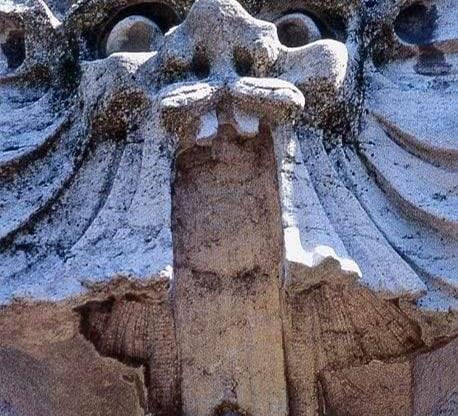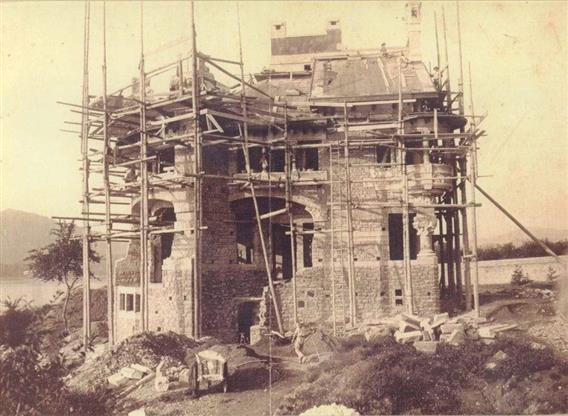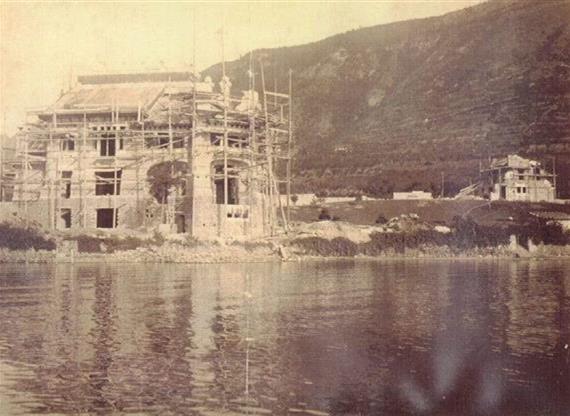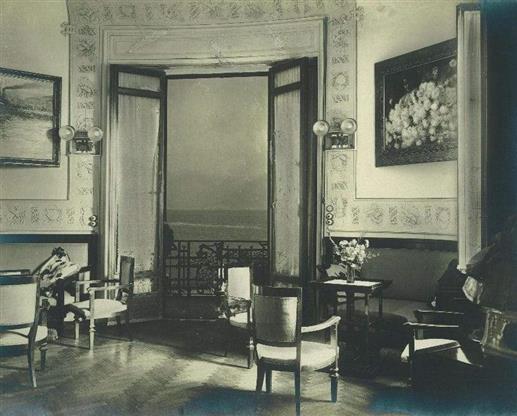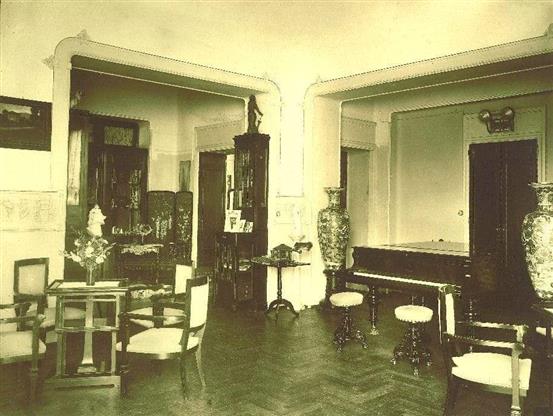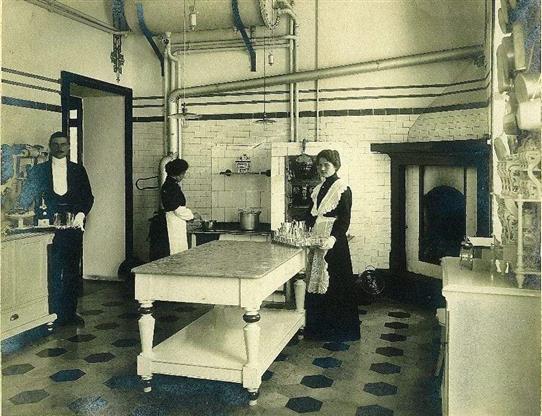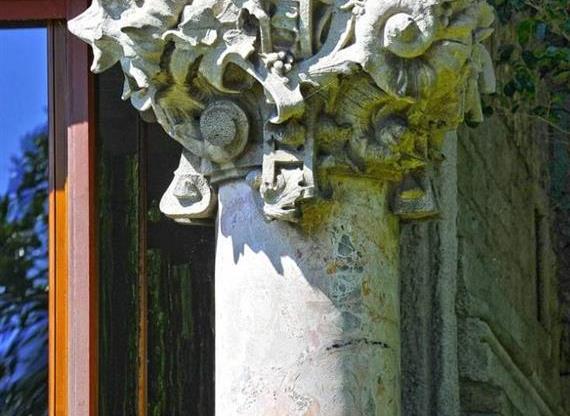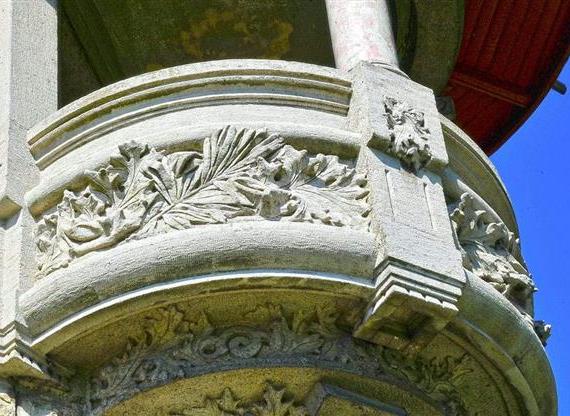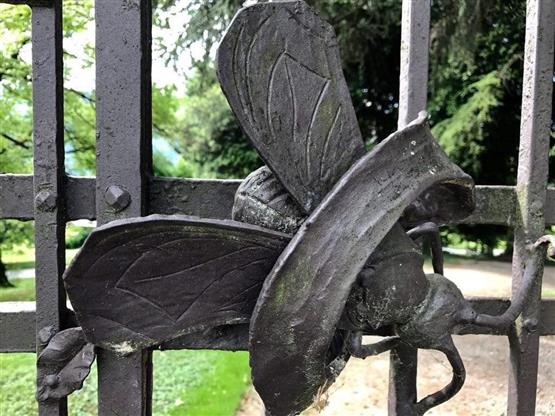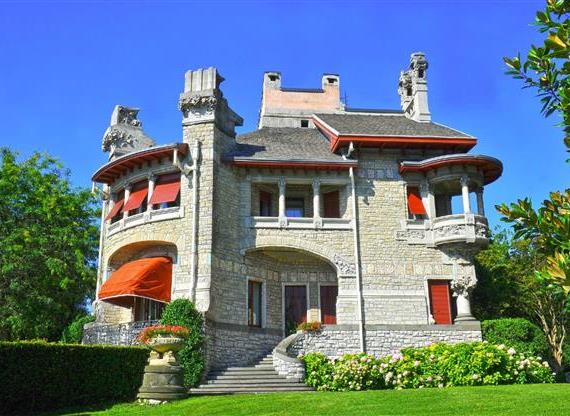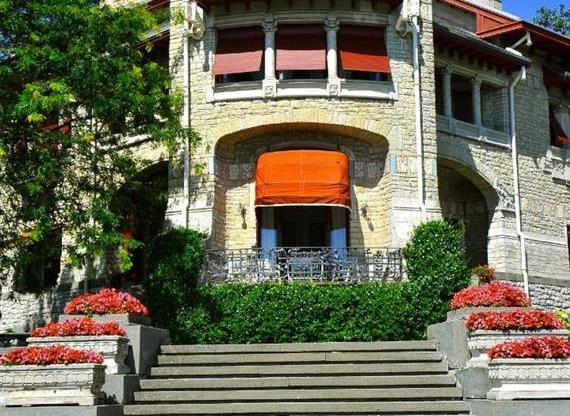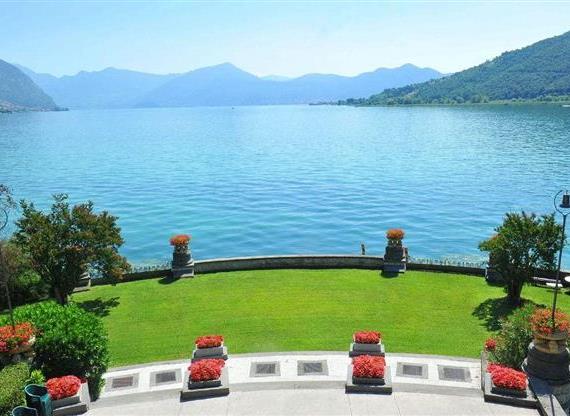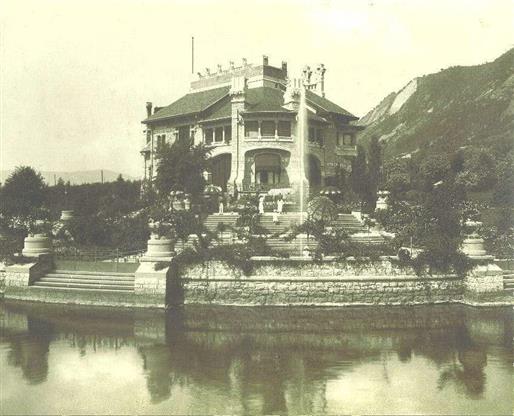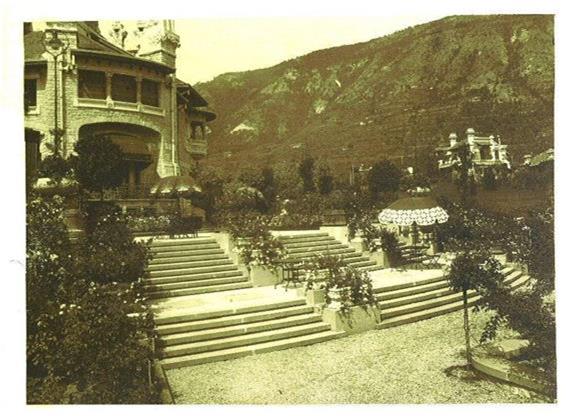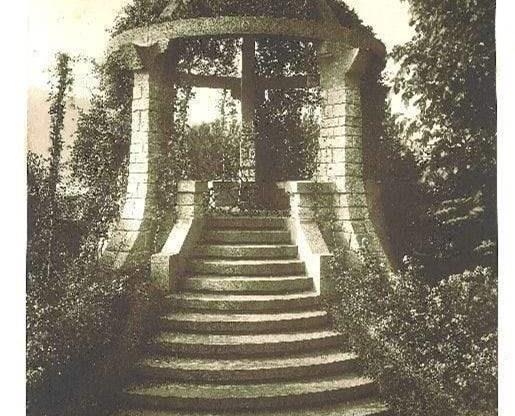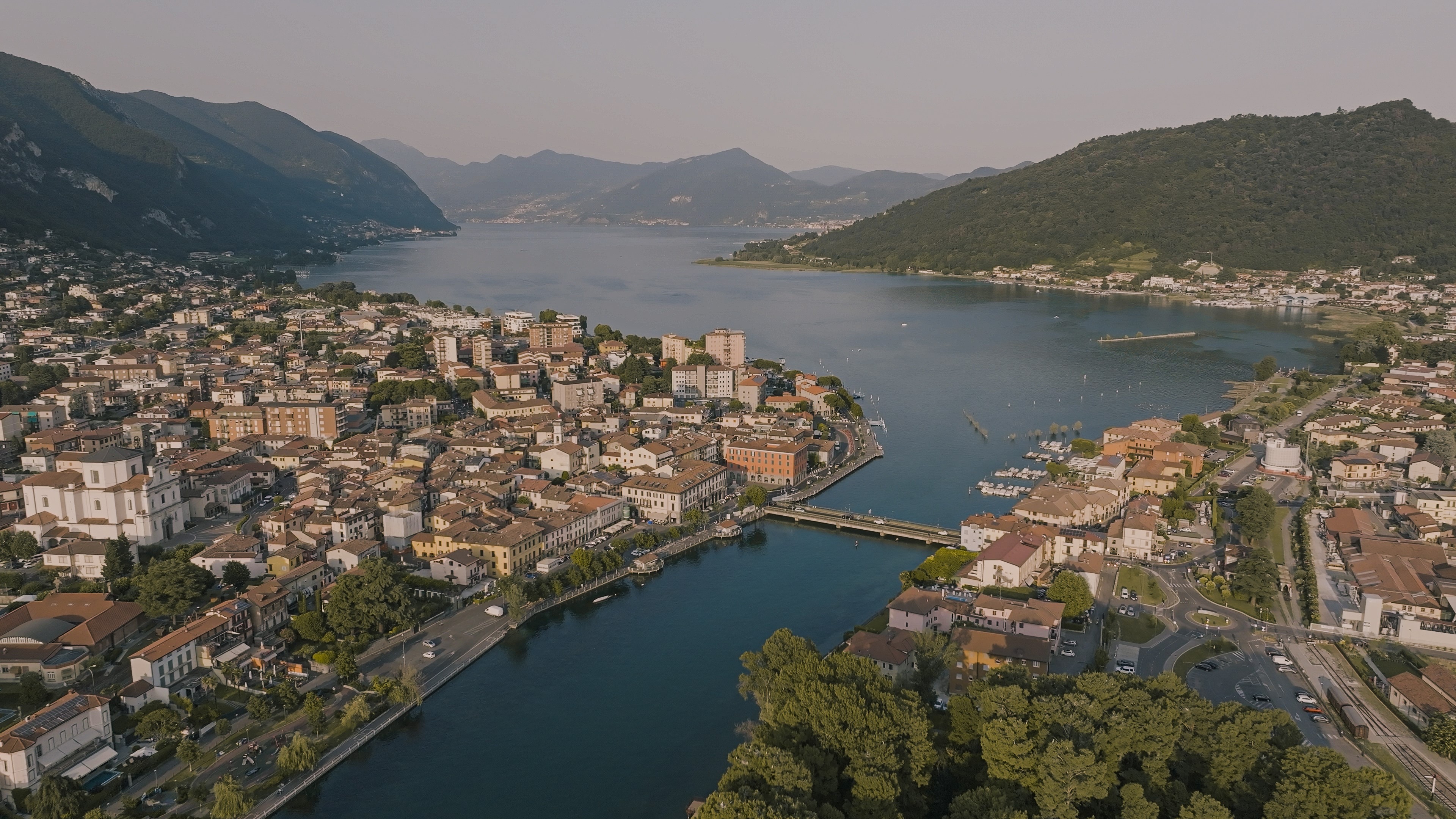
Ch. 6 - VILLA GIUSEPPE FACCANONI (1907)
Indirizzo: Via Vittorio Veneto, 56 Sarnico BG
Historical-artistic notes
A fine description of the life of Giuseppe Faccanoni can be found in “Faccanoni” by Antonio Giorgi who writes, “Giuseppe Faccanoni was the typical gentleman of the “Belle Epoque”. A handsome man, with a distinguished bearing who was noticed immediately for his elegance […] he had traveled widely in Europe and knew very many people of high rank. He was born in Savona on 5th November 1863 (…). He collaborated with his brothers and with other relatives who did a great deal of major work in the territory of the former Austro-Hungarian Empire. A skillful and precise businessman, he was always a precious element and effective support in all the Faccanoni enterprises. He was also a sportsman and a keen sailor. Although he always kept a house in Milan, he retired to his splendid villa in Sarnico, built-in 1907.
Like his brothers Pietro and Luigi, he too called on the great Milanese architect Giuseppe Sommaruga to build him a villa on Lake Iseo (…) The choice of the place and the orientation of the building which looks onto the lake longitudinally, impress even the layman. Giuseppe Faccanoni lived with Maria Fabbro, who died at only 35 years of age and is buried in the Mausoleum. Then he decided to change lifestyle and married Alessandra Riccardi in Milan at the age of 51.
They had two daughters (Liliana and Jolanda Faccanoni). Liliana saved the old villa designed by Sommaruga (which had been so dear to her father) and restored it after the German military occupation in the last years of the war (…) In order to keep the Faccanoni surname, Aunt Liliana obtained the adoption of her nephew Giuseppe Marco Tobias from the Court of Bergamo in 1979”. (…) In his book, Giorgi recalls having seen the film “Crevalcore” as a child with the villa as the backdrop. The film, directed by Romolo Bacchini, was based on the popular novel of the same name published in 1907 by Neera and was produced by Armenia Film of Milan in 1917. It starred the actors of the time, including Almirante Manzini, Gigi Armandis, Giuletta Dè Riso, Luigi Duse etc.”.
It is indisputably, together with the Mausoleum, the best-known work designed by Sommaruga for the Faccanoni family in Sarnico.
With the Milanese mansion for the Galimberti family (1908) and this villa in Sarnico, Sommaruga achieved his most personal definition of a “palazzina” or as the original design was in fact called, “small villa for bachelor”. Situated on the lakeshore, it is the most evocative villa. Designed in 1907 like the Villa Passeri, it is surrounded by a fine romantic park with a winding drive.
Here, even more than in his other designs, the architectonic work is born together with the surrounding nature, closely linked with it in its main forms and at the same time imposing on the landscape a morphological revolution, with the creation ex novo of a peninsula facing the lakefront allowing the longitudinal layout of the villa and the lake façade in the direction of the greatest perspective.
The English experiments in the gardens were copied in this period: it was more an idyllic image than that outlined by Romantic painting. There is a return to Nature which is revalued in all its casualness and when it does not appear casual enough it is “helped”.
The contemporary Anglo-Saxon experience takes on a role as guide and inspiration influencing the evolution of the idea of the garden throughout Europe in the 19th century. The landscape is rolling but without sudden interruptions and without sharp edges. The symmetrical axes disappear. Paths are winding and right angles are avoided. At the bottom of the garden, there is a beautiful gazebo, a place for contemplation and aesthetic pleasure. Beside it, once separated by a dry brick wall, there was the model orchard on the orange grove.
This villa, built before the “Surre” villa, corresponds better to the search for “vital”, or rather “organic” architecture: the traditional facades do not exist, but there are privileged points of view which, summed up, invite a complex observation which is apparently unattainable in its totality. The first impact is the wrought iron gate by Mazzucotelli.
We can see the theme used by the craftsman-artist in the other two railings of the Villa Faccanoni in Sarnico and in the railings of Credaro: impressive plastic developments (typical spiraling flat ribbons which highlight the technical skill of the designer). The joints of the railings with highly visible bolts; and the fastening to the wall are definitely more complex and organic, the very visible fly recalls the typical style of Sommaruga. The bow and the knot are also found in his other villas.
On the left, entering, the stables are now the guardian’s house.
In the “Archivi del Liberty italiano” by Rossana Bossaglia, an important scholar of Art Nouveau, the villa is described as “(…) a two-story building, with attics, a tower terrace, bow windows; the main entrance on the rounded corner facing the lake. Facings in different types of stone, with terra cotta, cement, and ceramic decorations. The plan is very lively and develops a series of rooms that are functionally linked without corridors and on various levels; great care has been taken with the architectural conception and the decorative parts: of all the works by Sommaruga that have come down to us, it perhaps represent his masterpiece”.
The exterior
The villa consists of a high stone footing, of which the effect of solidity is contradicted by the opening of the stairs, windows, and balconies; two rows of bas-relief in cement with a floral pattern created by the sculptor and faithful collaborator of the architect, Ernesto Bàzzaro. Colored ceramics in pastel shades with the insert of the same floral pattern unify the dominant central park. The loggias and balconies are of different shapes and sizes.
It is interesting to note the use of different types of building materials: from ashlar work to Sarnico stone and Credaro stone with a smooth cut or left rough.
Lastly, the roof is not a simple covering but introduces a further element of variation, interrupted by the pitches placed at differing levels, the belvedere, and the large chimneys. Nor is there a lack of imaginative references, such as the two “beaks” which from above stretch out towards the lake, or the circular corner balcony reminiscent of Renaissance “choir stalls”.
This important villa marks, according to Manfredi Nicoletti: “the end of an involute quest, the narcissism of which is accentuated precisely by those valences which have the aim of masking their gratuitousness: the volumetric contrasts, the exasperation of an unnecessary and therefore hypertrophic fragmentation of the functions (…). However, this work seeks evasions that are not to be overlooked, symptoms of genuine restlessness”.
Even if Sommaruga wished to give an extremely personalized version of Modernism, his production contains affinities that are not irrelevant to France’s H. Guimard. The connections with the France architect can be seen in the picturesque conception of architecture which is revealed above all adoption of intersecting sloping roofs, with strongly projecting gutters, a use of facing materials (stones, cement) aimed to produce lighting and chromatic effects or the use of wooden beams for the purpose of highlighting the rustic-mountain character.
Sommaruga never imagined a layout without it corresponding to a well-defined purpose. The exterior was governed by the interior. The risk of an operation of this kind is that it lacks the overall organic unity of the work. The architect nevertheless succeeds in breaking away from the traditional concepts of academic design and reaching surprising effects of unpredictability. An anomalous quantity of asymmetry can be seen in the rooms – doors and windows – variations of luminous and chromatic intensity due to the different depths of the rooms and projections: loggias, balconies, balcony roofs, decorative parts and bow windows, or the use of different materials. The pattern of the subsequent façade can only be guessed at and it is possible to allude to but not completely perceive the spatial logic of the interiors. International Modernism wanted to create a new speciality which can also be seen in Italian Liberty. Sommaruga has unquestionably succeeded in giving rise to original sequences with an Italian hallmark.
In this villa, Sommaruga uses the king of uprights-buttresses that he had already used at the Tre Croci Hotel in Campo dei Fiori and which anticipated the language of Sant’Elia. The vertical uprights give further soaring lines to the construction.
The furnishing and decoration of the villa (plaster and plastic cement) represent the most unmistakable sign of his decorative style. In the plaster decoration, he invents the particular stylistic feature of flat plaster worked with incisions, producing very curious graphic effects, which are more contained in the Villa Passeri, and transferring this technique to the use of other materials, as in the use of terra cotta in the Villa Luigi Faccanoni (1912).
The sensitivity to the treatment of matter, one of the most significant points of Sommaruga’s poetics, touches its peak of expressive intensity in some examples of these plastic cements. The repetition of certain motifs, such as the spiral, which gradually loses every geometric or plant allusion to be transformed into an irregular tangle of matter, shows Sommaruga’s desire to assert, in his unrepeatable imprint, the independence of his research.
Arata had already had the intuition of this when he said that Sommaruga repeated certain motifs… “because he had already made us many postulates of his personality because they were essentially his creation and above all because before him no-one had ever done anything similar”.
Decorative motifs, especially zoomorphic, are also repeated in the garden, such as the turtles and lobster bearing the large pots of geraniums or the real and imaginary animals that look on to the garden from the villa: snails, but also monkeys and lemurs showing the contemporary taste for the exoticism of the period.
Today, entering the large exhedra gate and then going down one of the drivers that leads to the villa, built in such a way that the lake view becomes an essential part of its interior, beyond the villa you notice the sinuous projection of the park towards their, in a part that in actual fact is built on piles, and you realized that the fundamental invention of the architect was environmental.
The formal and chromatic imagination which is profuse in the exterior with the use of different materials and which has appeared excessive to some and stimulating to others, receives a meaning from this desire not only in comparison with a landscape but in some way reinventing it.
This desire to design a spatial continuum between the interior and the exterior is also shown by the number of accesses (no fewer than seven) that allow entering the villa from any side and by the relatively modest impressiveness of the mine entrance.
The interior
The villa has lost its original furnishings, with only some ceiling lights and the very fine wrought iron lamp that used to dominate the dining room, remaining but no longer in their original position.
The singularity of the interior and the truly amazing architectonic value of the villa are revealed in the layout of the rooms and points of view which are created, in the interior, by continuity of spaces that unwind in an L-shape around a staircase hall, with its a pivot and focal center the large room opening a corner towards the garden. A three-flight staircase has a ceiling that is sinuously joined to the walls and a wrought iron banister by Mazzucotelli with the initials, as in other places, of G.F., the owner. The staircase with the iron banister recurs in the other two villas as well; again in a central position, there is a large window with an iron frame. In the drawing-room, there is the fireplace, the built-in stone of Sarnico, and pieces of dark grey marble with zoomorphic motifs carved into the stone and with the combination of the wrought iron by Mazzucotelli.
On the first floor, there is a well-distributed series of well-proportioned bedrooms with bathrooms, each with balconies and loggias of different shapes and perspectives. Each room looks onto the landing of the large staircase and is inter-communicating with the others.
The close relationship between the architect and the owner is clearly visible in the master bedroom, which has three large windows looking onto the lake at an angle: the layout of the terrace and the portion of the garden obtained from the lake and even the view “lengthways” of the lake give the impression of being on the deck of a ship or sailing-boat, Giuseppe Faccanoni’s true passion (also shown by the sail hook on the ceiling of the service stairs).
Above, there is another floor with service bedrooms more traditionally laid out along a corridor. From the basement, it is possible to go directly down to the landing.
Through the drawings published by Monneret de Villard, it is possible to follow the evolution of the design in subsequent changes: the first sketch, dated 27th August 1907, presents a solution with a tower terrace and the two uprights framing the main entrance crowned by two flattened domes; in the second perspective sketch, the domes; in the second perspective sketch, the domes have been eliminated; in the final version, the tower has been eliminated too and only the terrace remains. What is almost totally lacking is an in-depth study of Sommaruga’s spatiality. Only Arata briefly refers to the problem.
From some photographs taken at the time of the building, it can be seen how some details (such as the shape of the windows in the basement) were modified when the villa was nearing completion.
The villa is in a good state of preservation and is still the property of the Faccanoni family.
In “Faccanoni” by A. Giorgi
Predore, 1995
In “Giuseppe Sommaruga” By E. Bairati / D. Riva
Mazzotta, Milan, 1982




